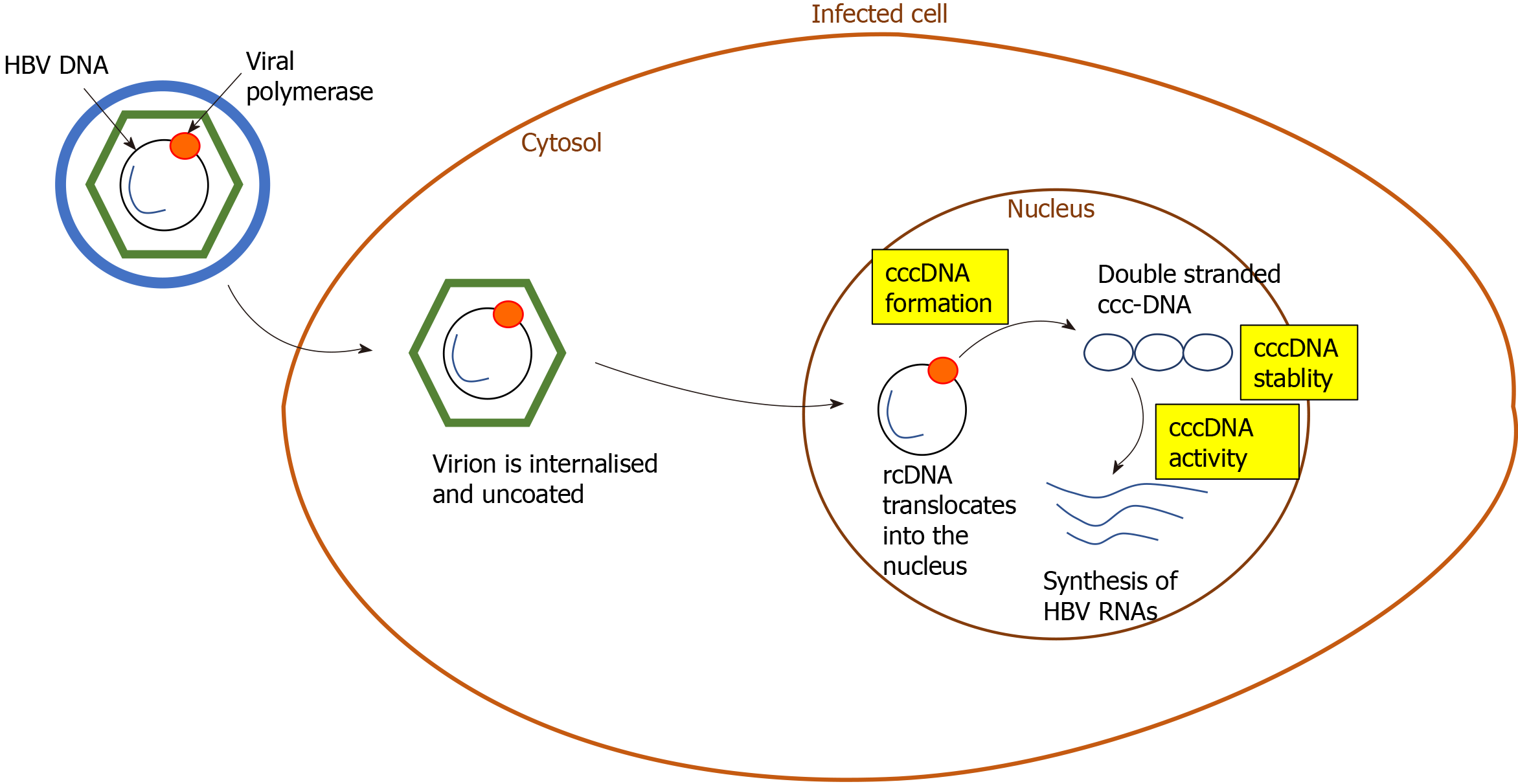Copyright
©The Author(s) 2021.
World J Gastroenterol. Jun 21, 2021; 27(23): 3249-3261
Published online Jun 21, 2021. doi: 10.3748/wjg.v27.i23.3249
Published online Jun 21, 2021. doi: 10.3748/wjg.v27.i23.3249
Figure 1 Diagrammatic summary of the therapeutic options targeting covalently closed circular deoxyribonucleic acid to prevent hepatitis B virus persistence.
After entering the cell, the virion is uncoated and the relaxed circular deoxyribonucleic acid (DNA) genome (rcDNA) translocates into the cell nucleus. Once there, the covalently closed circular DNA (cccDNA) formed resides in the nucleus of infected cells as a minichromosome and originate the new viruses. Drugs that prevent cccDNA formation, that affect its stability, or even cccDNA activity must stop hepatitis B virus persistence. cccDNA: covalently closed circular deoxyribonucleic acid; HBV: Hepatitis B virus; RNA: Ribonucleic acid.
- Citation: Almeida PH, Matielo CEL, Curvelo LA, Rocco RA, Felga G, Della Guardia B, Boteon YL. Update on the management and treatment of viral hepatitis. World J Gastroenterol 2021; 27(23): 3249-3261
- URL: https://www.wjgnet.com/1007-9327/full/v27/i23/3249.htm
- DOI: https://dx.doi.org/10.3748/wjg.v27.i23.3249









